Jack Kirby has always been the quintessential Jewish comic creator. His history is the history of many Jews in America. The child of Ashkenazi immigrants, Kirby was born in the Lower East Side and worked his way out of poverty to strive for the American dream. As he gained success as the co-creator of Captain America, Thor, Iron Man, The Avengers, The Hulk, The X-Men, The Black Panther, and many more, he remained the same stubborn tough guy with a big heart.
This article is the last in a trilogy looking at Jack Kirby’s life and legacy. Throughout this series, we have compared Kirby to the character that best resembles him- The Thing, AKA Benjamin Jacob Grimm. This article will discuss Kirby and Grimm’s acceptance and acknowledgement of their Jewish heritage as an analogy for Jewish life in America. Be sure to read my past classics by clicking here and here.
Benjamin Grimm is comic’s most iconic Jewish hero. Like Kirby, Grimm is like the desert cactus, the sabra– tough on the outside but sweet on the inside (also a term used to describe Jews born in Israel). It took until 2002 for Marvel to finally have a main hero established as Jewish. While early creators hid their heritage and changed their names, today’s creators use our own names, include Jewish themes in tales, create graphic novels based on our history and even have a big Jew-boy as one of the most prominent Marvel Superheroes!
The classic tale of Grimm’s embracing his heritage took place in “Remembrance of Things Past” by Karl Kessel and Stuart Immonen in Fantastic Four Vol. 3 #56, published on August 1st, 2002. This features Grimm returning to his roots, showing what assimilation has caused many Jews to leave behind. Up until this point, Grimm had never acknowledged his Judaism. Grimm, like Kirby, grew up on the Lower East Side of Manhattan. Much like many Jewish Americans, as Grimm gained acceptance in the mainstream American society, it came at the price of leaving much of his heritage behind.
During his time as a pilot and member of the Fantastic Four, Grimm created a new identity distant from the old country. Grimm’s invention of his new identity was common to Jews. At Ellis Island, Jews would lie and bribe their way into America. They would create false family relations, false ages, and false back-stories- their identities became moldable. Part of the American dream included being able to re-invent yourself, and for many Jews who had lost hope in their faith and seen others destroyed for their heritage, this meant distancing themselves from Judaism.
Kirby’s pen name was a simplification of his real name, Jacob Kurtzberg, with an Irish swerve. He liked the new name because it reminded him of one of his favorite movie actors, Jimmy Cagny. Kirby explained his own name change, saying “I’m not ashamed of being a Jew, I just like the name”. With his new fancy non-Semitic name, Kirby used his strong work ethic and incredible talent to rise out of the ghetto.
As Grimm became a successful superhero, his old community felt they had been left behind, a common issue amongst minorities. His former friends, the Yancy Street Gang, have always had a love/hate relationship with Grimm for moving up in American society. They often show their affection by playing non-stop pranks on their former member. One Yancy Streeter stated “Everyone knows you always wanted off the street, Grimm–become some hotshot pilot!”
Unlike many other Yancy Street Gang members, Grimm was saved from street crime when his father died and he moved uptown to live with his uncle Jake, a doctor, and Aunt Alyce, leaving the street behind. Grimm’s youth shows that had he not been afforded this opportunity, he would have been just like the other hoodlums. Kirby, also a former gang member, could have also gotten further caught in street crime, had he not been immensely talented.
I feel like many of the early comic creators left us behind on their path to success- they no longer paid their respects to the communities that shaped them (at least not publicly, which is a continued conscious effort to distance themselves from our communities). I never felt this rejection from Kirby. Kirby wasn’t ashamed of being Jewish and he celebrated many of our customs. He even had a picture of the Thing all Jew-ed out hanging in his house. The image proudly showed Grimm rockin’ a yarmulke and tallis. What a nice Jewish boy! Stan Lee, on the other hand, never directly references his Jewish heritage.

A Hanukkah card sent out by the Kirbys featuring The Thing praying while wearing traditional Jewish garb.
“Remembrance of Things Past” is a great account of an incident in Grimm’s childhood, in which he steals a Star of David necklace from a local shop to get initiated into the Yancy Street Gang. Simcha Weinstein, author of Up, Up, and Oy Vey! interprets the theft as a representation of “the banishment of faith and symbolizes his willingness to betray his religion in exchange for a feeling of belonging, not to mention worldly success.”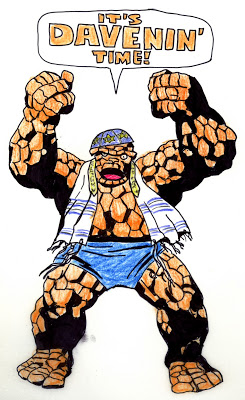
Grimm, filled with guilt, returns to the shopkeeper’s pawnshop in the present-day to make amends and return the necklace. Grimm finds the elderly shopkeeper dying after a super-villain attack. Grimm is caught in quite the predicament- if he performs CPR, he will crush his friend, due to his strength. Thinking that his friend is fatally wounded, Grimm starts saying the Sh’ma, the most famous Jewish prayer.
Mr. Sheckerberg recovers and then states “It’s good to see you haven’t forgotten what you learned in temple, Benjamin. All these years in the news, they never mention you’re Jewish. I thought maybe you were ashamed of it a little.” Grimm admits that he never told people he was Jewish because he figured “there’s enough trouble in this world without people thinkin’ Jews are all monsters like me”.
It is important to realize, while Marvel acknowledged Grimm’s Jewish heritage as homage to Kirby, it was not meant to be a large media stunt. Current Senior Vice President of Publishing Tom Brevoort, the editor on the comic, stated “To us it wasn’t really as big a deal as it seemed to become. To us it was really just no more or less significant than looking for a good story for the next issue of Fantastic Four.” Grimm’s heritage was not used to tokenize him; his recognition and return to his heritage was a natural progression of the story.
It was a huge deal– Grimm’s coming out the closet was a beautiful acknowledgement of Kirby’s influence on the field as well as finally recognizing the influence by the many other amazing Jewish creators who birthed the field.
Kirby and Grimm didn’t put on tefillin each day or keep kosher. According to Kirby’s wife Roz, “You need to know he wasn’t a religious man who would go to the temple every day and on weekends like his father did. He still believed in his faith, and he liked to read the Bible.” Kirby and Grimm were everyday Jews who dealt with identity, personal, and societal issues. Their history is that of the Ashkenazi Jew, escaping the shtetls of Eastern Europe and reaching for the American dream.
Resources:
______________________________________________________________________________________________________
Jay Deitcher, LMSW(@mrdeitcher) is an educator on comic history and runs successful Free Comic Book Day events yearly. You can see a listing of his incredible articles at JayDeitcher.com.





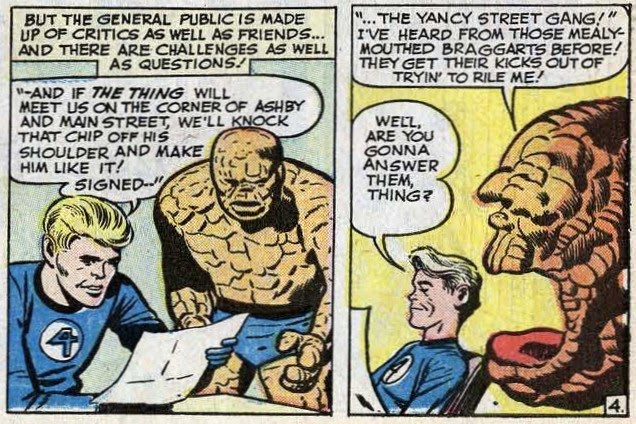

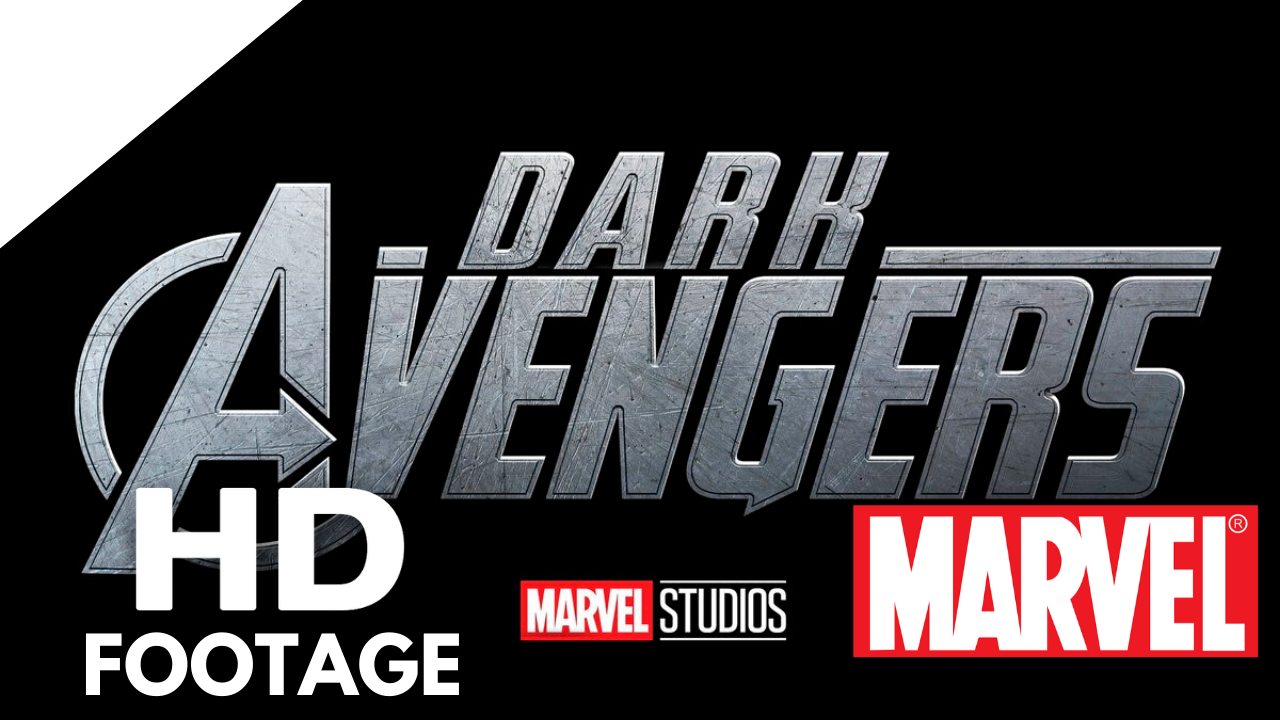
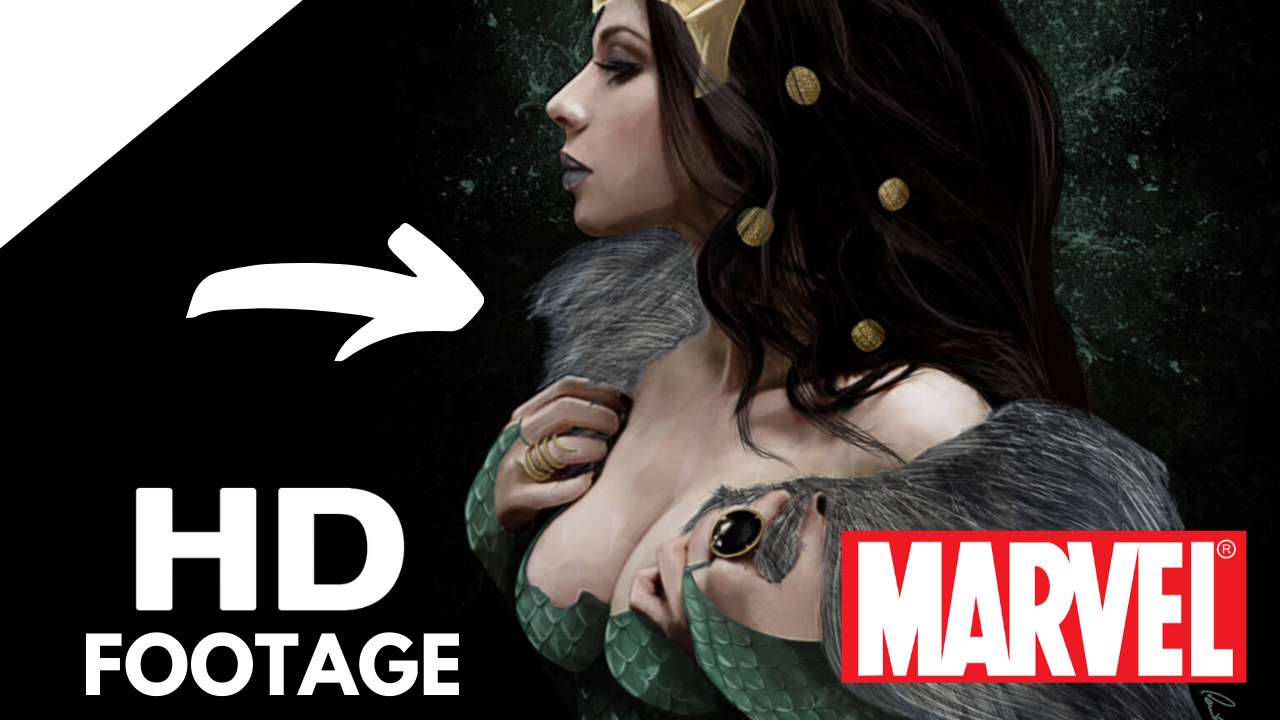




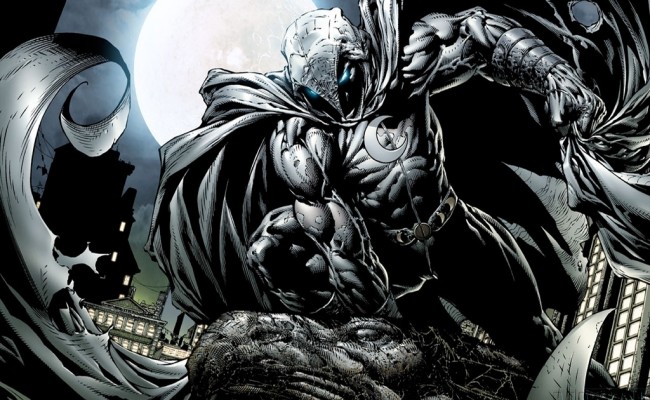

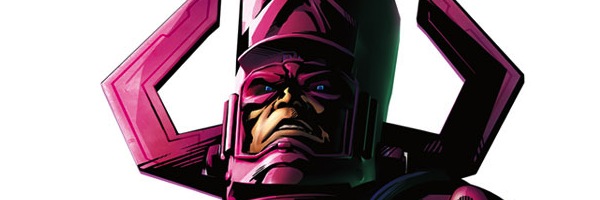

S#!T Talking Central